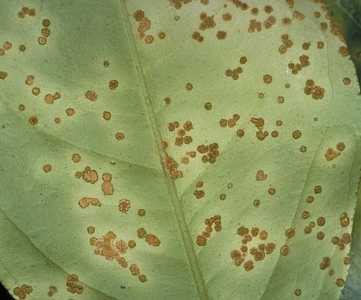Credits:Biovision-Infonet

(c) Courtesy EcoPort McKenzie E., Landcare Ltd., New Zealand
Black scurf (Rhizoctonia solani), powdery scab (Spongospora subterranea) and common scab caused by the bacterium (Streptomyces scabies).
These diseases may cause similar symptoms. Black scurf and scab cause skin blemishes (russeting; rough corky tissue) on tubers.
These lesions may be so numerous as to involve the entire surface of affected tubers. Such lesions spoil the appearance of the tubers and cause waste in peeling and reduction in grade. These pathogens live in the soil and survive in infected tubers. In most cases infection occurs whilst the tubers are still in the ground.
What to do:
- Practise crop rotation.
- In case of scab use healthy certified seed tubers.
- Disinfect seed tubers from infected field through heat-treatment (10 min in water at 55 degC). The same treatment of naturally or artificially contaminated seed tubers gave complete absence of blackleg infection in the field and decreased the amounts of powdery scab (Spongospora subterranea) and black scurf (Rhizoctonia solani) on progeny tubers.
- Avoid excessive liming and continuous cropping with potatoes.
- Maintain soil pH at about 4.8 if continuous cropping cannot be avoided.